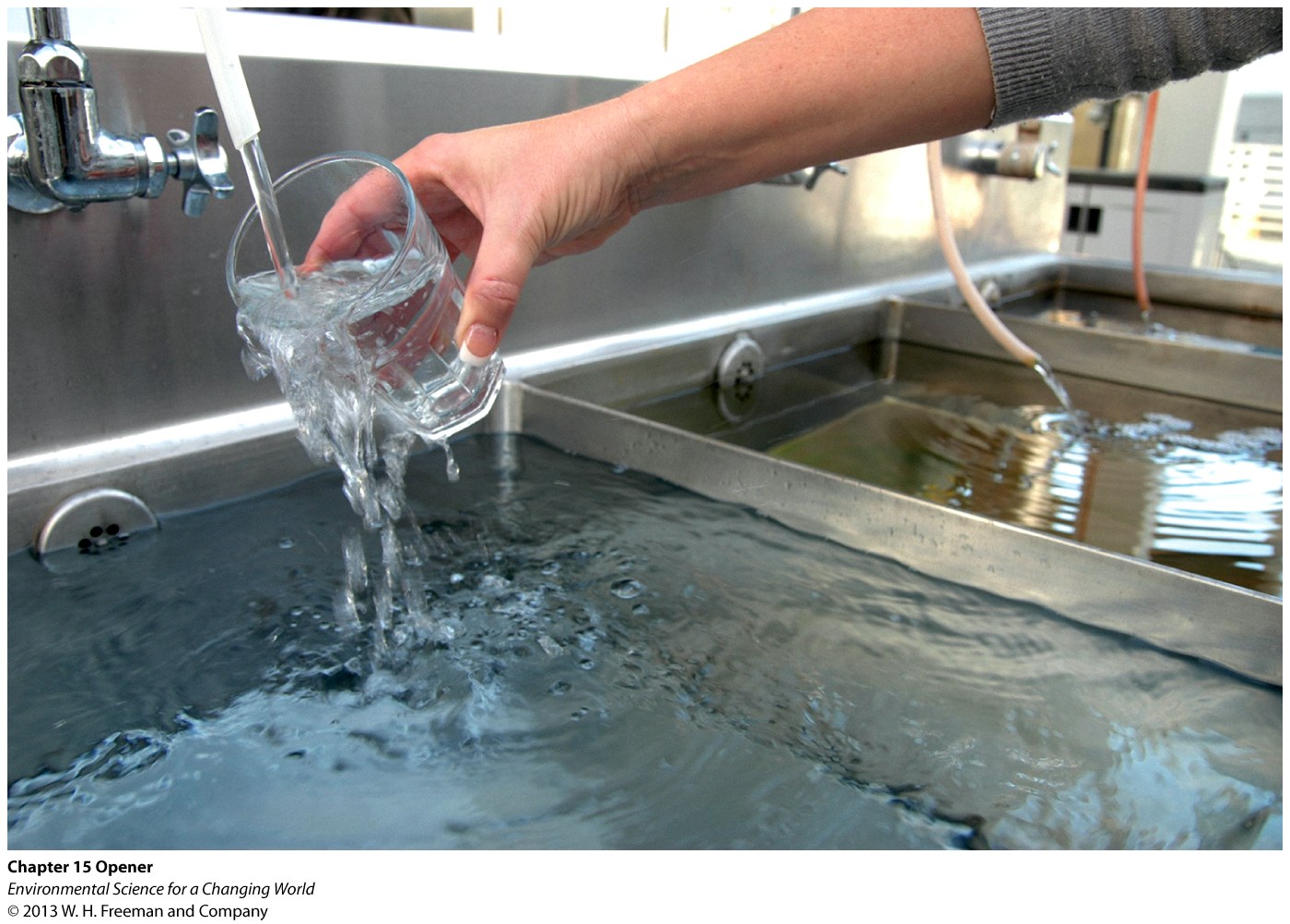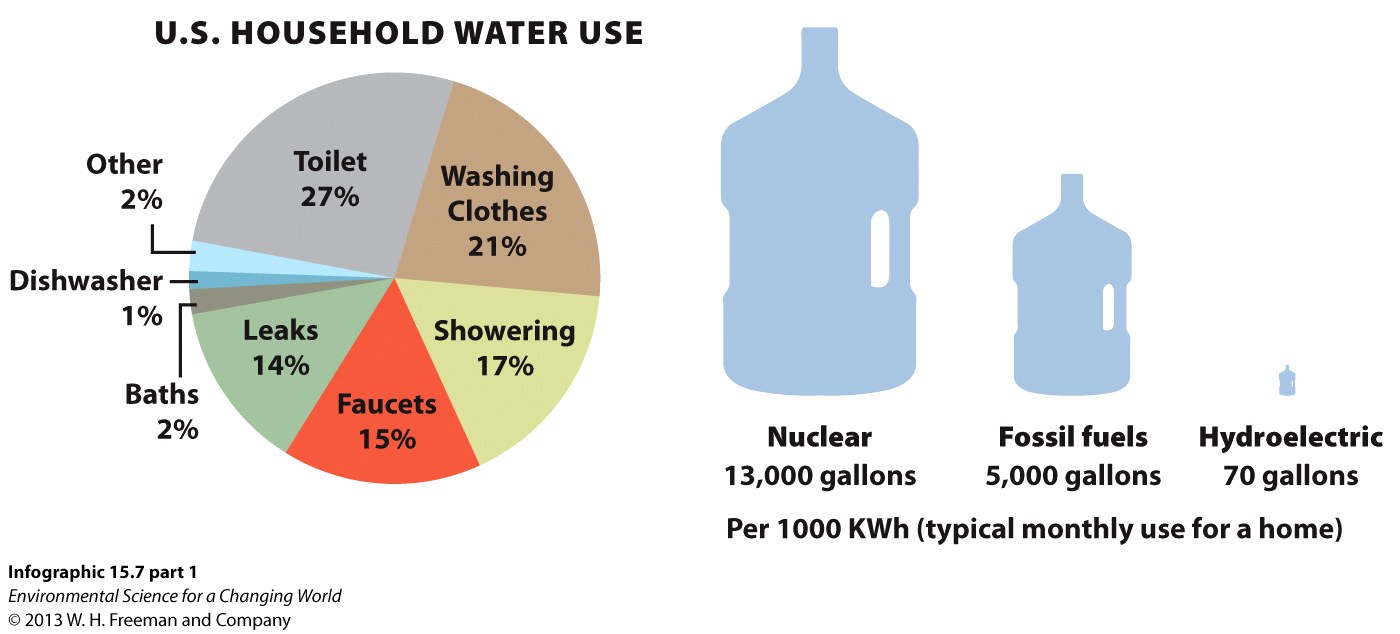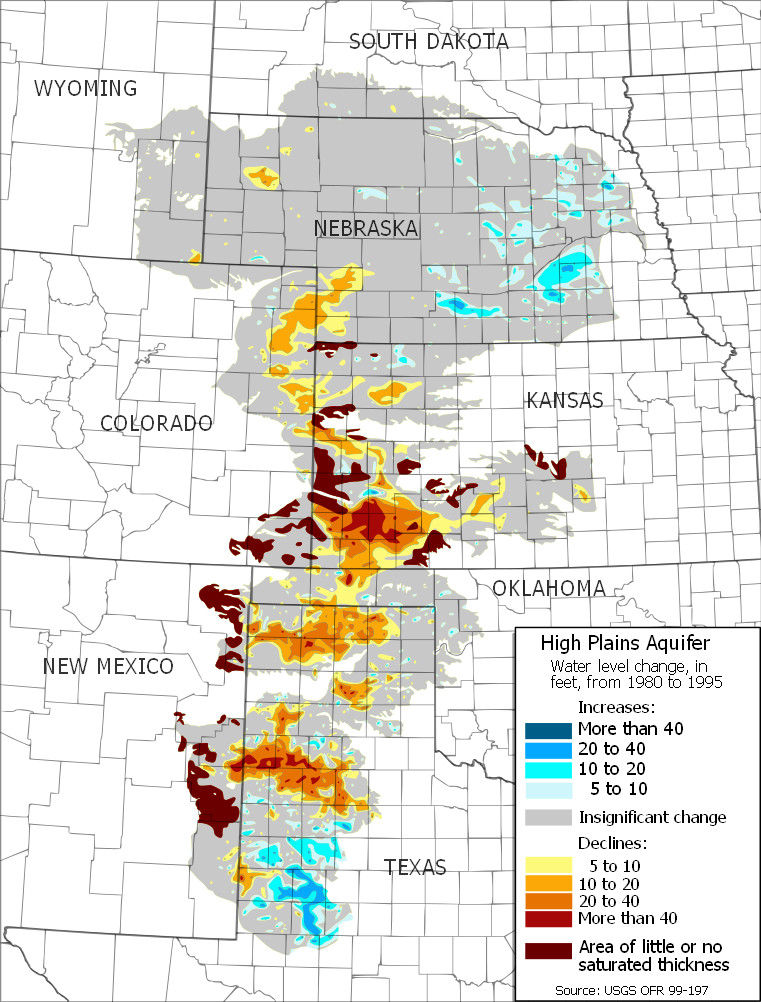
Chapter 15. Chapter 15: Freshwater Resources
How can conservation help us address water scarcity issues?

Guiding Question 15.5
How can conservation help us address water scarcity issues?
Why You Should Care
Technology solves problems, but it always comes with a price tag for energy, labor, and maintenance. Conserving water and using less of it cost less. Businesses and agriculture are the largest users of water, and price increases for water are leading to innovations that increase water efficiency and save money.
Consumers are also part of the solution, especially in areas where water is already scarce. Limiting water usage can be easy (not washing your car or watering your lawn as much) or hard (choosing water-efficient appliances). It is also easy and cheap to limit how much water we use directly (showering for shorter times, turning off faucets, and recycling rainwater). Small changes like this can lower your water footprint by up to 10% and not cost you a dime!
Test Your Vocabulary
Fill in the blanks below.
A is a structure that blocks the flow in a river or stream.
A is an artificial lake formed when a river is impounded by a barrier.
1.

Which change would make the biggest difference in the amount of water used in a month?
| A. |
| B. |
| C. |
| D. |
2.
Many communities are reluctant to use recycled water for potable uses. Which of the following would be a potable use for recycled water?
| A. |
| B. |
| C. |
| D. |
3.
Arizona is a drier state, and residents have become more supportive of recycled-water projects as a recent drought has grown worse. What are the major issues facing a project seeking to promote recycled water for potable uses?
Short-Answer Questions

[Map of water-level changes in the High Plains/Ogallala Aquifer in parts of Colorado, Kansas, Nebraska, New Mexico, Oklahoma, South Dakota, Texas, and Wyoming, 1980 to 1995. Created from public domain data produced by the USGS and made available in Open-File Report 99-197[1][2]. Authors: Fischer, Brian C.; McGuire, Virginia L.]
Arizona is a drier state and residents have become more supportive of recycled-water projects as a recent drought has grown worse. What are the major issues facing a project seeking to promote recycled water for potable uses?
The Ogalalla Aquifer (also called the High Plains Aquifer) is an enormous aquifer that sits under the Great Plains of the United States. Much of the land here is dry (less than 20 inches of precipitation per year) and is home to grasslands that are excellent for raising livestock.
These grasslands are irrigated to increase productivity and provide more forage to feed the livestock (about 30% of the irrigated water used in the country comes from this aquifer). As cattle ranches have switched to more intensive methods with higher stocking rates, the number of gallons of water needed has skyrocketed.
The aquifer has been depleted by 10% since the 1950s, as water withdrawal has been greater than recharge. The map above shows that the depletion is very patchy: Some areas have increased, while others have declined dramatically (as much as 5 feet at one site in a particularly dry year).
1) One proposal to preserve the aquifer is to inject treated wastewater back into the aquifer. What safety concerns would you have about this in an area of agricultural importance?
2) The region overlying the aquifer is nicknamed “the breadbasket of America” because of large-scale of corn, wheat, and soy crops. Since these crops require less water per pound of food produced, another proposal to preserve the aquifer has been to stop irrigation for feeding cattle and concentrate on irrigating vegetable crops.
a) What would the economic costs of this be for the cattle ranchers?
b) If consumers were part of this proposal, what incentives, advertising, or ecolabeling (Chapter 5) would help ranchers transition?
3) Imagine you have a cattle ranch in North Texas and the groundwater depletion is forcing you to drill deeper to reach the groundwater. How is this an example of a tragedy of the commons?
2a) Enforcing this proposal would mean that ranchers would have to change their farming methods and equipment. The cost for this would have to be factored into the proposal.
2b) Advertising how the transition benefits consumers by providing more stable food prices, ecolabeling this new sustainable food practice (maybe at a higher price), or providing incentives through subsidies or national advertising promotions to increase recognition of a brand (Green Ogalalla, anyone?)
3) A tragedy of the commons is a situation where there is no economic incentive to stop unsustainable behavior if neighbors continue degrading the resource. Here, there is no incentive to use less water if neighbors continue using more water. Efforts to conserve water need to be done by everyone equally.
Activity results are being submitted...